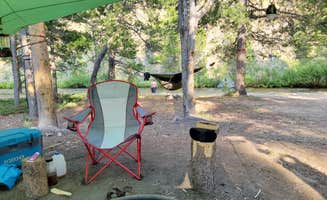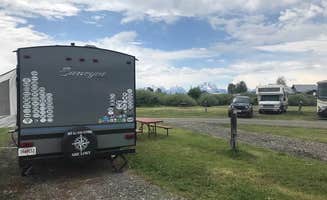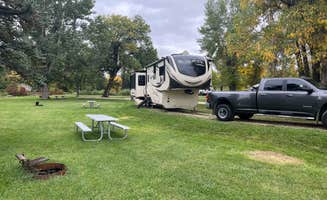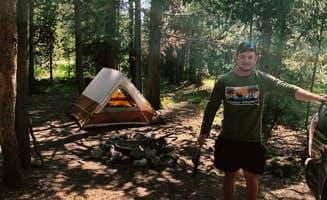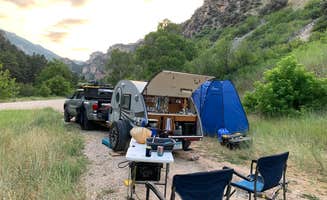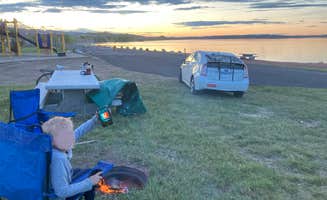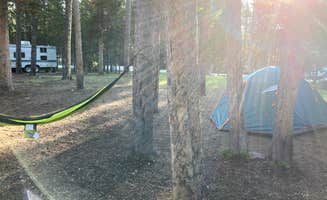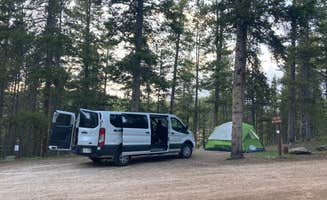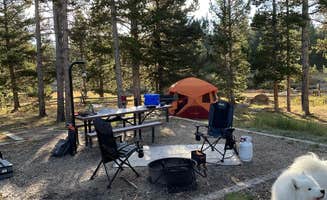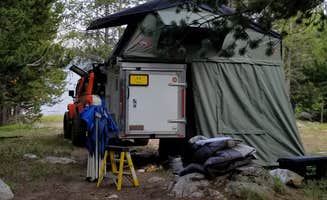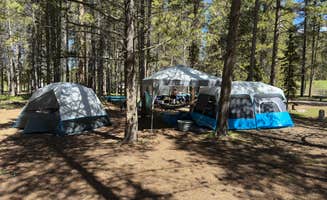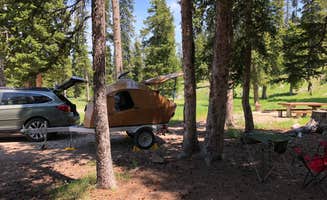Campsites near Big Horn, Wyoming offer varied terrain from 4,000-8,000 feet elevation, creating diverse camping environments within short distances. The Bighorn National Forest borders the town, providing both established campgrounds and dispersed camping options. Temperature differences between mountain and valley locations can exceed 20°F, with mountain sites remaining significantly cooler throughout summer months.
What to do
Fishing access: At Connor Battlefield State Historic Site, the Tongue River provides productive fishing opportunities. "We got a spot right along the creek which even in the dark sparkled in the moonlight," notes Jessica, who appreciated the waterfront access during an overnight stay.
Wildlife viewing: Pronghorn sightings are common at Mikesell Potts Recreation Area, where campsites offer viewing opportunities. "Nice lake front camping spots and some in the back with prong horns visiting. Great place to walk around," reports David W., highlighting the accessible wildlife viewing.
ATV trails: The northern Bighorns offer extensive off-road opportunities. "We are hikers and don't have ATV's, so hiking trails are a must for us. Thankfully, the Tie Flume campground is near abundant hiking and ATV trails," explains Kathi V., who found multiple trail systems accessible from camp.
Mountain exploration: Forest Service roads provide access to remote camping areas with significant elevation changes. "The drive up, it's 8400 feet in the Big Horn is spectacular and then the drive down if you are heading west is amazing too with the Shell interpretive waterfalls park," notes Todd S. about his mountain camping experience.
What campers like
Mountain temperatures: Summer heat relief draws campers to higher elevations. "The temperature got down to 45° which is perfect for me for sleeping," writes Lisa D. about her experience at Grouse Mountain Basecamp, where the mountain elevation keeps nights cool even during summer.
Uncrowded campsites: Many visitors note the availability of dispersed camping options. "Driving through Bighorn National Forest we found TONS of free dispersed camping off route 20... Far apart and lots of privacy," explains meghan G., who appreciated finding secluded spots.
Clean facilities: Campground cleanliness receives consistent praise. "This place is amazing... Bathrooms were very well kept. Firewood for sale. Beautiful spot," notes Todd S. about his camping experience in the Bighorns.
Moose sightings: Wildlife encounters happen regularly throughout the area. "We camped way back below Freeze Out Point and woke up to a spectacular sunrise and 4 moose right in camp," writes Jessica, who experienced wildlife directly in her camping area.
What you should know
Road conditions: Access to remote sites can be challenging without appropriate vehicles. "We bottomed out a few times, and by the time we made it to the campground we weren't sure how we would make it out if it were to snow or rain," cautions Shawn O. about accessing Little Goose Campground, emphasizing the need for high-clearance vehicles.
Limited services: Facilities become more limited as distance from towns increases. "There is NO cell service within 18 miles of the campground. Additionally, there is no grocery store or even stocked service station within miles as well. Come prepared with what you need for your entire stay," advises Kathi V.
Self-registration systems: Most forest campgrounds use honor system payment. "Check in is via honor system. Most sites have some form between them," explains N M., describing the typical self-service registration process.
Weather variability: Mountain conditions change rapidly, particularly with elevation. "When we stayed here was a dust storm with some intense winds, so bring your tie-downs," recommends Dene H., noting the need to secure equipment during typical mountain weather patterns.
Tips for camping with families
KOA amenities: Families seeking more facilities may prefer the Sheridan/Big Horn Mountains KOA, which offers dedicated facilities. "This KOA has nice wide lots and friendly staff. Laundry room was clean and cheap," reports Stacy M., who found the campground suitable for family needs.
Playground access: Several campgrounds include play areas. "The facilities were very clean and the showers we nice snd hot. I felt safe and comfortable," reports Nita D., who appreciated the family-oriented amenities despite some road noise.
Pet-friendly options: Most area campgrounds accommodate pets with varying levels of facilities. "Nice and tidy... A fenced in area for dogs to run and play was fun," notes Jill R. about her experience at Peter Ds RV Park, highlighting the dedicated pet areas.
Water activities: Lakes and streams provide recreational opportunities for children. "Beautiful lake. You can camp next to the lake. There doing improvements to the campground," mentions mildred O., noting the water access that appeals to families.
Tips from RVers
Site spacing: RV sites vary significantly in size across area campgrounds. "Sites are very tight but amenities are new and clean. Saw no better and a lot worse in Sheridan. Nice field out back to let dogs run," explains mary F., offering a realistic assessment of RV camping options.
Hookup locations: Some campgrounds have unconventional utility setups. "Make sure you have an extension for the sewer and water connect as it's mid to more front of the camper," advises one RVer based on their experience.
Power availability: Electric hookups are limited at some sites. "There are only a few spots with power, so get there early," recommends David W. about securing preferred sites with utilities.
Leveling requirements: Terrain varies across campgrounds, affecting setup needs. "We love dispersed camping but hauling a 25' airstream makes a lot of sites inaccessible despite our lift and rugged tires! But not here! It's a level, smooth, dirt road where you pull off the side anywhere you choose," shares Amy D., describing conditions that work well for larger trailers.


